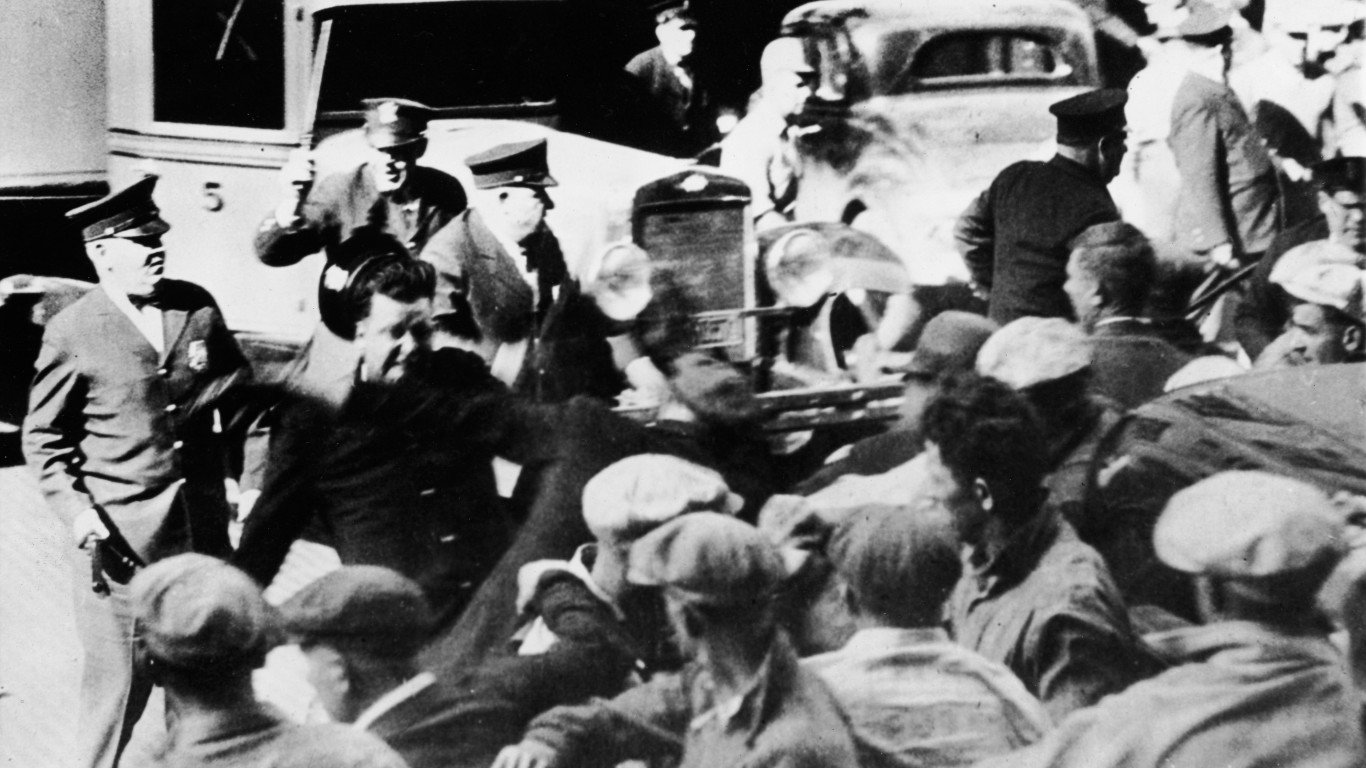

The state of unions in America today is not heartening to the labor movement. In 1983, the first year for which data is available, some 20.1% of the American workforce, representing about 17.7 million, belonged to unions. Last year, there were only about 14 million union workers, accounting for 10.3% of the workforce.
Organized labor has been on the defensive for years, as the economy has shifted away from companies employing traditional blue-collar workers. Twenty-seven states, mostly in the Plains and the South, have enacted right-to-work laws that have diminished union power. (These are the states with the strongest and weakest unions.)
The decline in union membership has undermined the clout of organized labor in America, but that hasn’t stopped workers, both unionized and otherwise, from going out on strike. According to the Washington Post, after a “strike drought” that began in the 1980s, strikes are becoming increasingly common again – as illustrated by 2021’s “Striketober,” which saw an unusually high number of labor actions in the tenth month of the year. Overall in 2021, there were job actions against John Deere, Nabisco, and Kellogg’s, as well as strikes involving nurses in Chicago and Buffalo, faculty at an Oregon college, and graduate students in New York, among others.
Strikes tend to come in waves, spurred by economic downturns and other factors. 24/7 Wall Street has created a list of the largest strike waves in US history, drawing on data from the Bureau of Labor Statistics, as well as Britannica and other online sources.
Click here to see the largest strike waves in US history
Many past job actions ended in violence, such as the Pullman Strike of 1894, which saw 30 people killed, and labor peace continued to be elusive for business in the early part of the 20th century. A number of strikes occurred immediately after both world wars, since many unions had deferred their demands until the conflicts were over. Job actions were undertaken by railroad, steel, and textile workers; miners; and postal workers – among many others. They protested low pay, dangerous working conditions, long hours, and harassment by management, and demanded the right to bargain collectively. Similar concerns persist to this day. (These are the most dangerous jobs in America.)
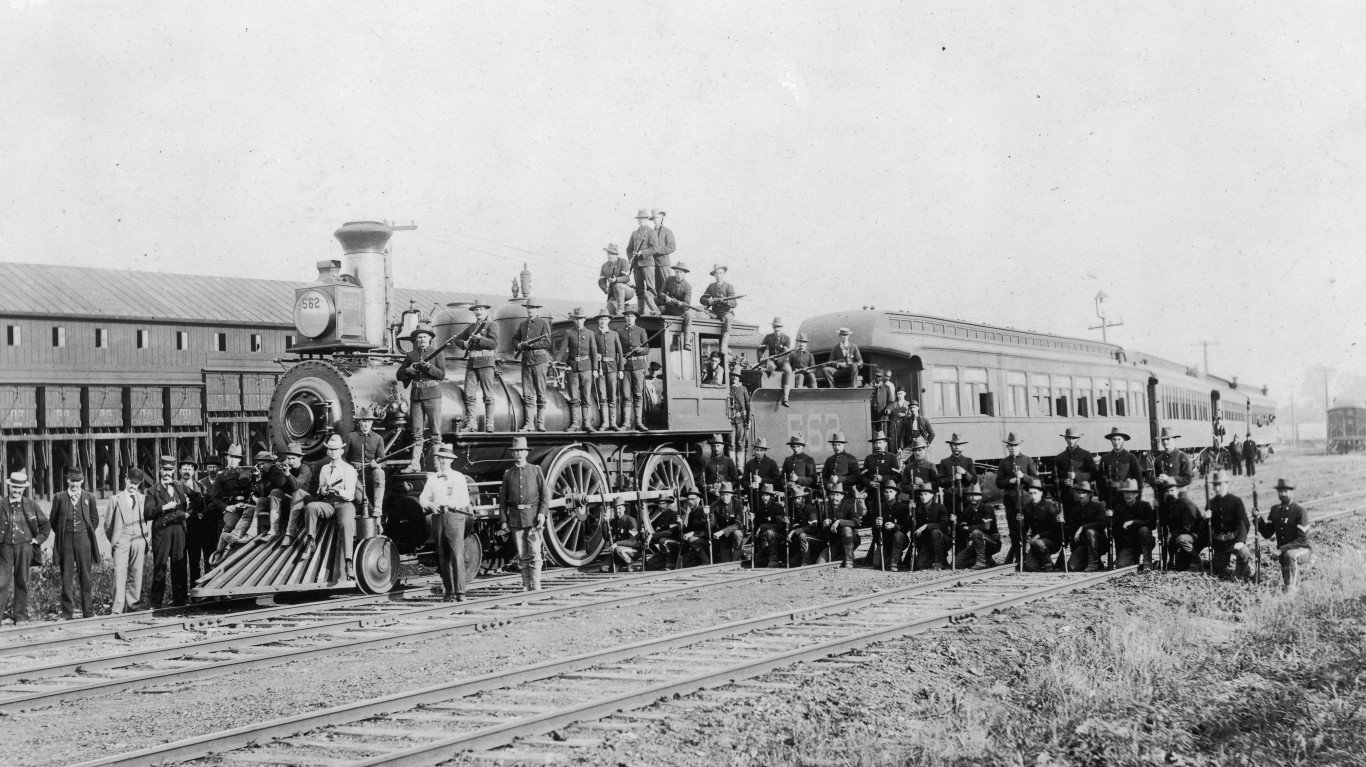
1894
In 1894, 250,000 factory workers struck the Pullman Palace Car Co. in Chicago from May until July. They were protesting 12-hour workdays and reduced wages, caused partly by the depressed economy following the Panic of 1893. Led by Eugene Debs, American Railway Union members refused to work on or run any trains that included cars owned by Pullman. The National Guard was brought in and in the ensuing violence, 30 people were killed. Following the tragedy, Labor Day was made a national holiday. A strike among 125,000 coal miners at various locations the same year because of depressed wages also led to violence. The settlement included miners getting an eight-hour day.
[in-text-ad]
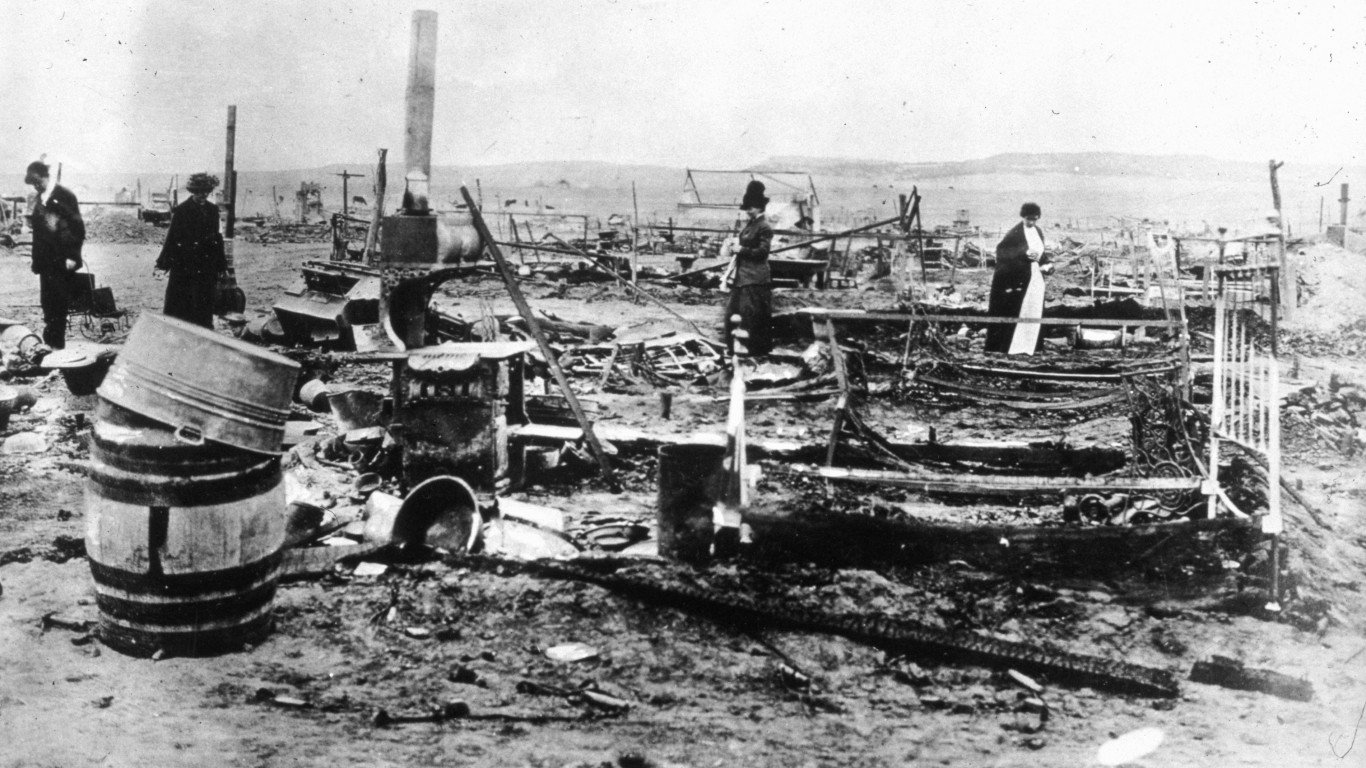
1913
Coal miners striking in Colorado wanted mine owners to adhere to Colorado mining laws and sought representation by the United Mine Workers of America. The strike started in 1913 and escalated to the Ludlow Massacre on April 20, 1914, in which 19 people were killed. The strike ended in December with the union failing to achieve its objectives. In Paterson, New Jersey, 25,000 silk workers went on strike for five months to protest an increase in loom assignments. It would eventually become the biggest strike in Paterson history. The Indianapolis streetcar strike began on Oct. 31 after workers had sought to be represented by the Amalgamated Street Railway Employees of America. Mediation failed and violence erupted, prompting the governor to call in the National Guard.
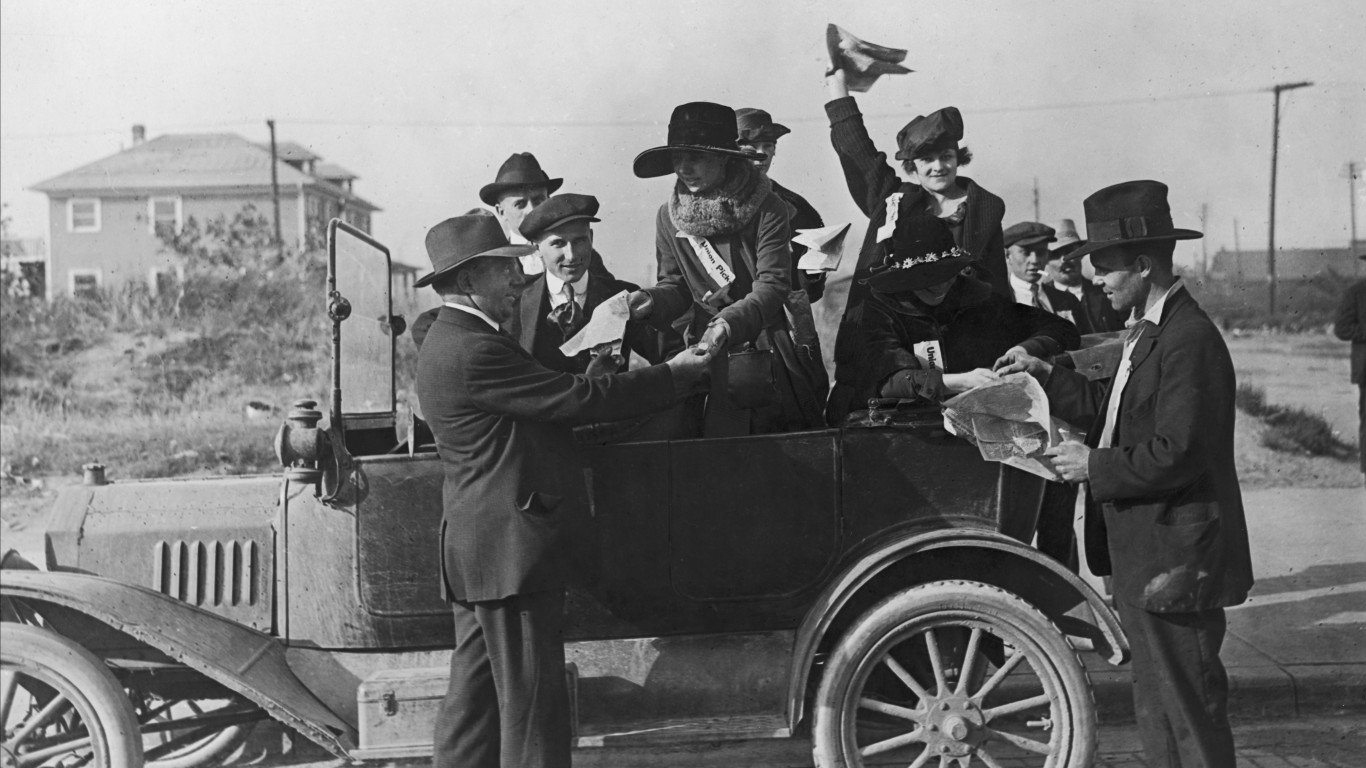
1919
With World War I over, strikes occurred among cigar makers in Boston, streetcar workers in Los Angeles, actors in Hollywood, and coal miners at various locations.
Boston police went on strike in 1919 to seek union representation and demanded higher wages to keep pace with inflation. Gov. Calvin Coolidge and Police Commissioner Edwin Curtis were opposed to police unionizing. About 1,100 of the 1,500-person force went on strike, and looting roiled the city. The National Guard was brought in and all the strikers were fired. The Great Steel Strike of 1919 involved more than 350,000 workers. They were represented by the American Federation of Labor and struck the United States Steel Corp. The strike failed as company owners preyed on American fears of communism by portraying the workers as dangerous radicals.

1920
There were coal strikes in Alabama and a streetcar strike in Denver in 1920. But the most infamous of strikes that year occurred in the southern West Virginia town of Matewan. That is where striking miners battled private security guards. The miners were attempting to organize and were prevented from doing so by company owners. The miners struck, leading to violence. A shootout that killed nine people came to be known as the Matewan Massacre, and served as a rallying point in the region for union representation.
[in-text-ad-2]

1934
With the Great Depression bludgeoning the economy, a strike wave in 1934 included job actions at New York hotels and strikes by truck drivers Minneapolis and auto workers in Toledo, Ohio. On the West Coast waterfront, hundreds of thousands of longshoremen went out on strike in Seattle and San Francisco. One of the biggest strikes involved textile workers in New England, the mid-Atlantic region, and the South. Some 170,000 Southern textile workers joined 130,000 fellow laborers in the North in one of the largest national textile strikes in American history.

1945-47
The post-World War II era was a time of job actions as wages fell and the United States tried to adjust to the return of military veterans. Over five million workers were involved in strikes during the first year after World War II. Oil workers struck just after Japan surrendered. Strikes occurred among film crews in Hollywood in March. About 43,000 oil workers walked off the jobs in October and approximately 225,000 United Auto Workers struck in November. These strikes were a prelude to job actions in 1946. That’s when electrical workers, meatpackers, lumber men, teamsters, and steelworkers struck. The biggest strike was among the steelworkers, with 750,000 going on strike. About 350,000 telephone workers around the nation, almost all of them women, went on strike for five weeks starting in April.
The strikes of this two-year period turned many Americans against the labor movement. The Republicans won the House of Representatives in 1946 and used their majority to pass the Taft-Hartley Act, which banned some strikes and allowed states to pass anti-union right-to-work legislation.
[in-text-ad]
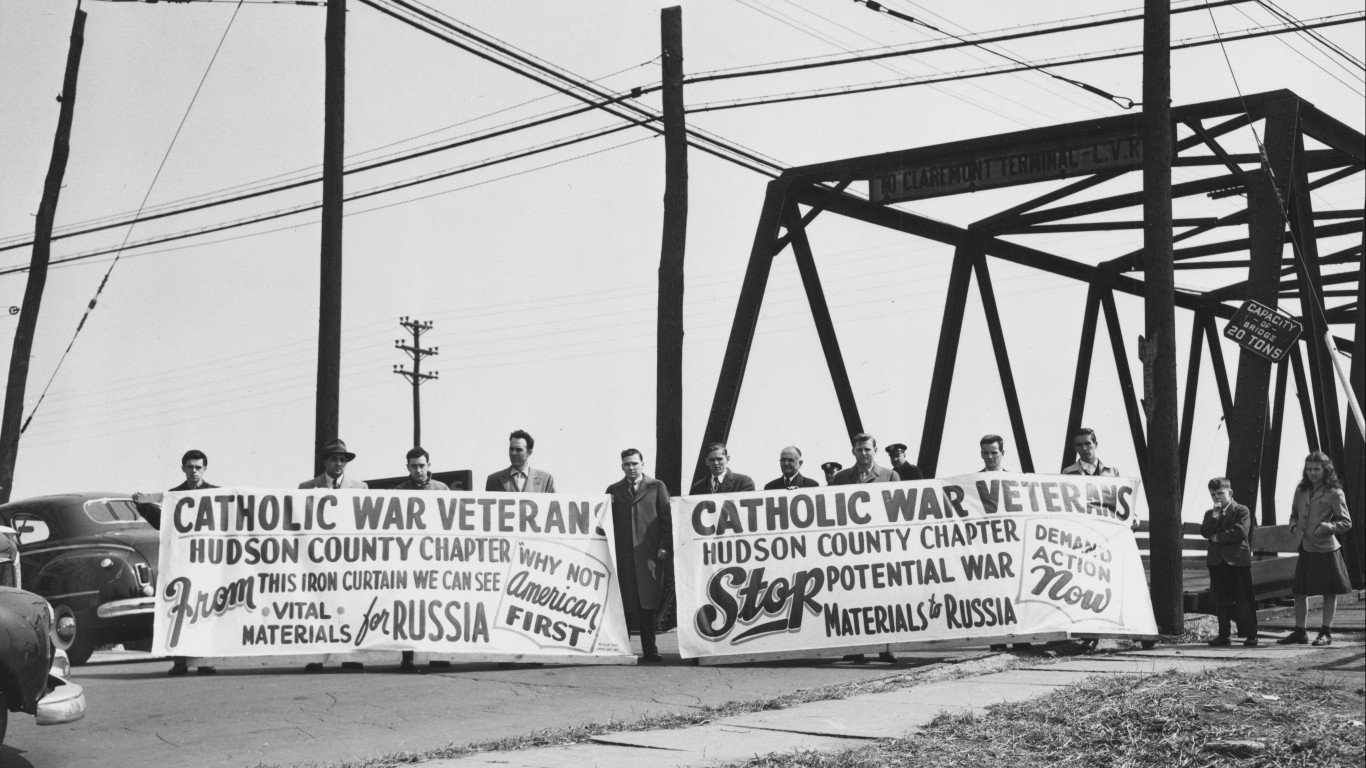
1948
Large industrial strikes marked 1948. They included job actions at Goodyear in Akron, Ohio, Caterpillar in Peoria, Ill., and Boeing in Seattle. Garment workers went on strike in Miami. Violence broke out during the Rath Packing Co. strike in Iowa after about 80,000 workers went out demanding that wages keep pace with inflation. The National Guard was called out and one person was killed. About 1.9 million workers went on strike in 1948 in all.
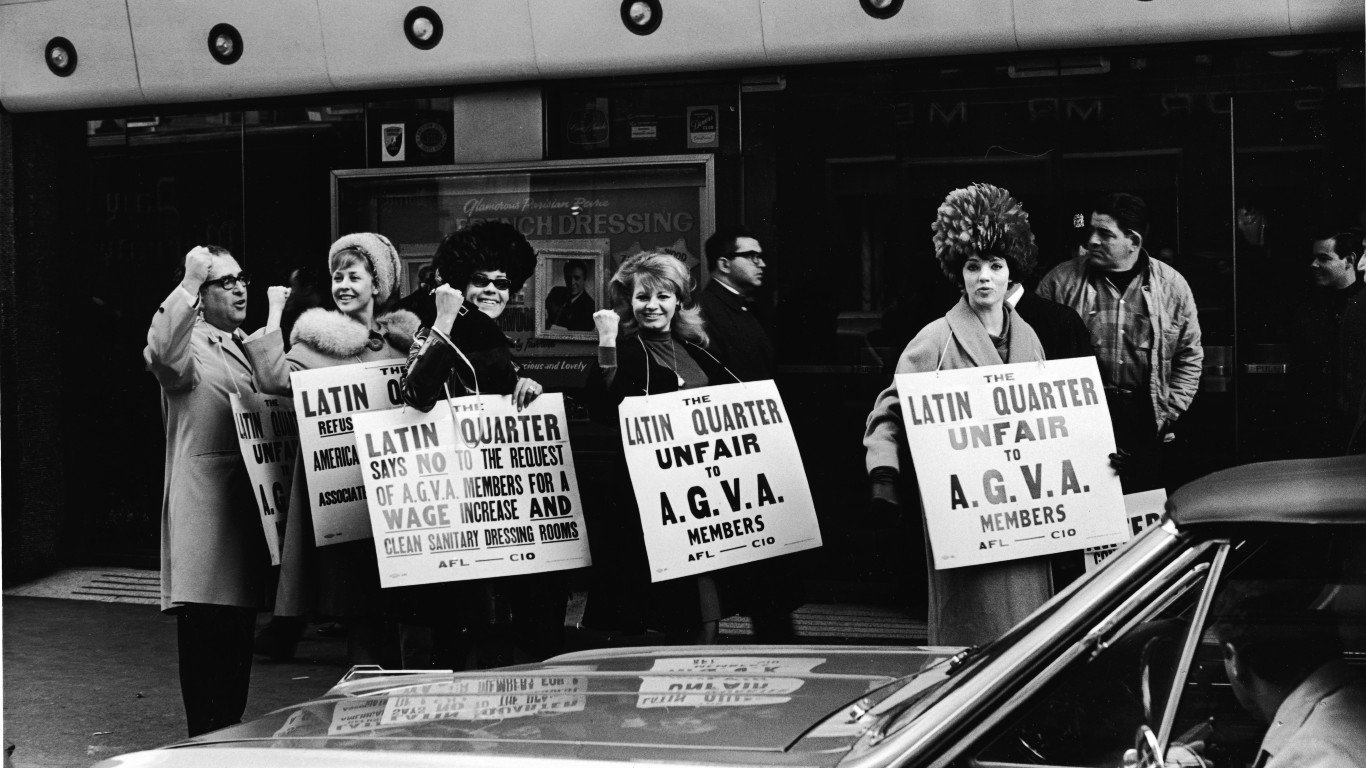
1949
New York was the focus of job actions in 1949, as taxicab drivers, brewery workers, and even cemetery laborers all went on strike. The taxi strike, which began when drivers sought union recognition, lasted for a week in April. More than 7,000 workers at New York breweries struck over the number of workers on board each truck. The workers wanted two and management wanted one. The job action lasted more than two months and resulted in a compromise. The cemetery strike, which included gravediggers, gardeners, and drivers, pitted workers at Calvary Cemetery against the Catholic Church. The workers sought a reduction in the work week from 48 to to 40 hours, as well as overtime pay.
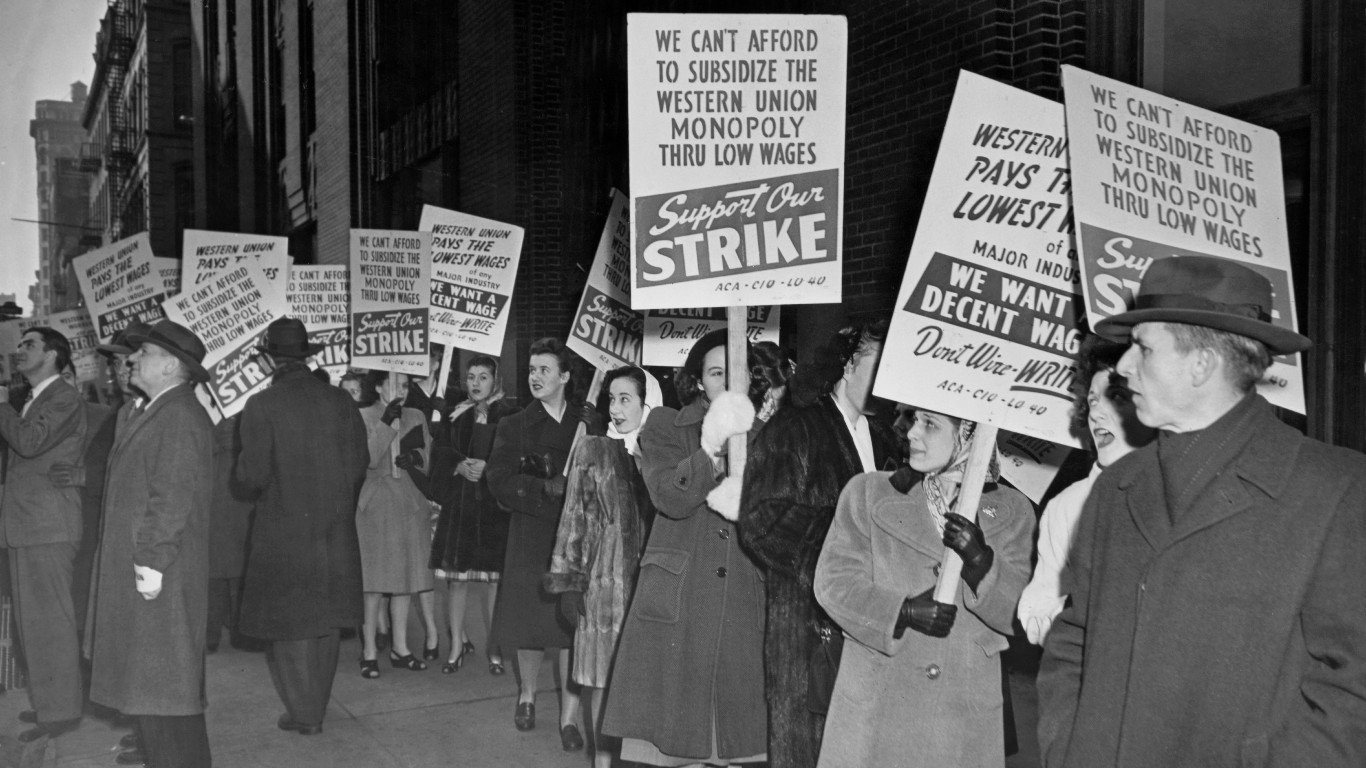
1966-67
After a prolonged period of labor peace, strike activity surged in 1966 and 1967. It started with a faculty strike at St. John’s University in New York City in January of 1966 that lasted until June of 1967. This was followed by a nationwide strike by 30,000 truckers; a strike by thousands of mostly Chinese railroad workers in California; a job action at General Motors in Dayton, Ohio; strikes at Caterpillar facilities in Colorado, Illinois, Iowa, Ohio, and Pennsylvania; and another GM strike in Detroit.
[in-text-ad-2]
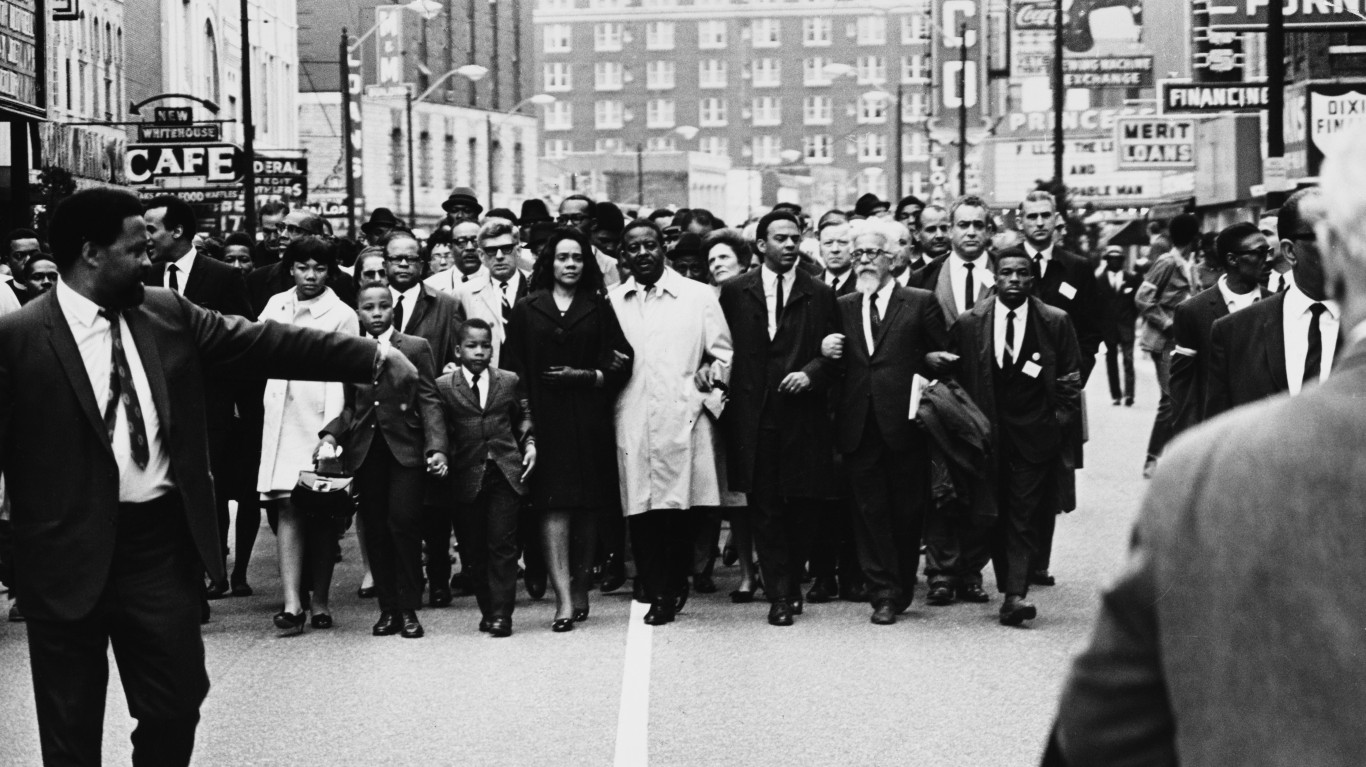
1968
Teachers strikes occurred in Florida and New York City, while a Chrysler wildcat strike hit Detroit. But the most famous strike took place in Memphis, and led to tragedy. Dr. Martin Luther King had gone to Memphis to stand with the striking workers, who were mostly Black, after two sanitation workers had been crushed to death by malfunctioning equipment. King gave his famous “mountaintop” speech to the workers the night before he was assassinated.
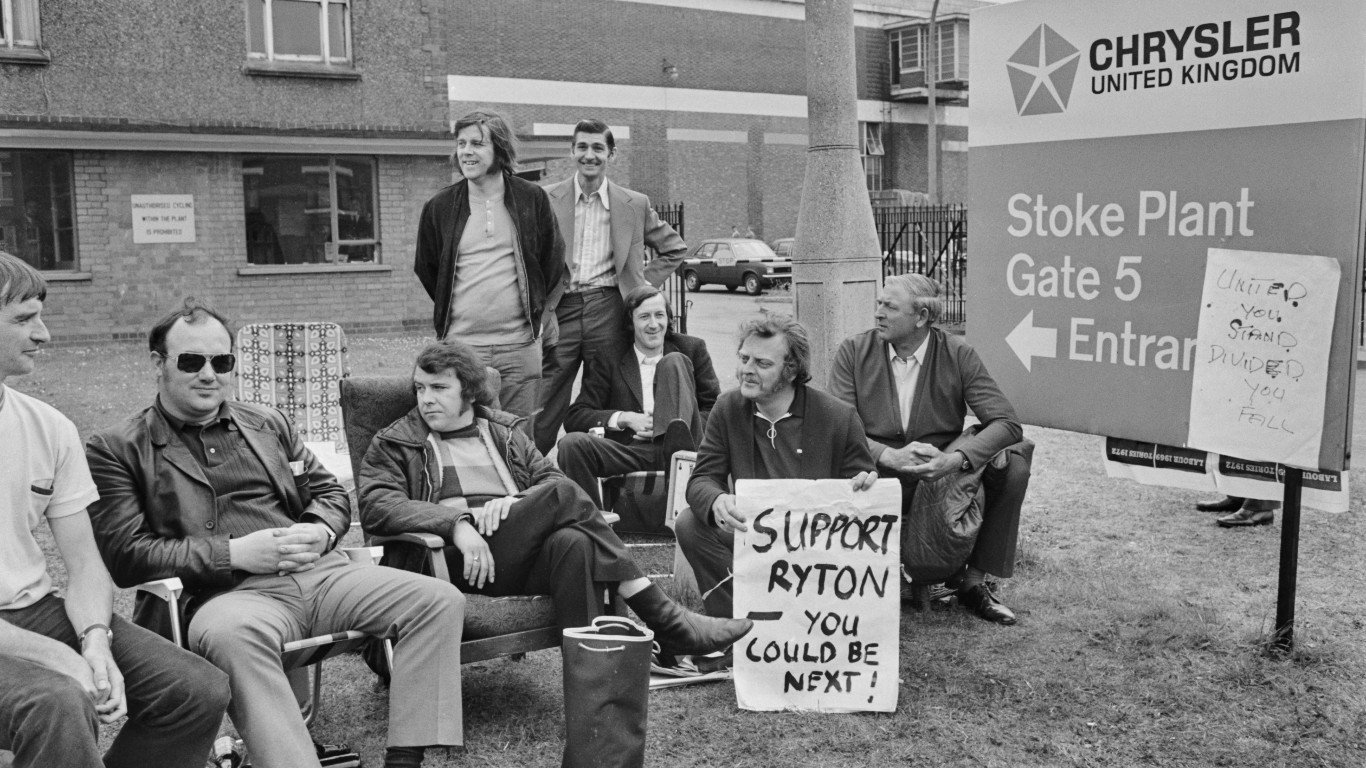
1973
Teachers unions were becoming more militant in the 1970s, as they sought a greater role in educational policy. They took to the picket lines in places like Philadelphia, Chicago, Cleveland, and Detroit in 1973. The Chicago strike, which lasted two weeks, was the third one in four years. About 117,000 workers went on strike against Chrysler at plants across the US and Canada in January of 1973.
[in-text-ad]
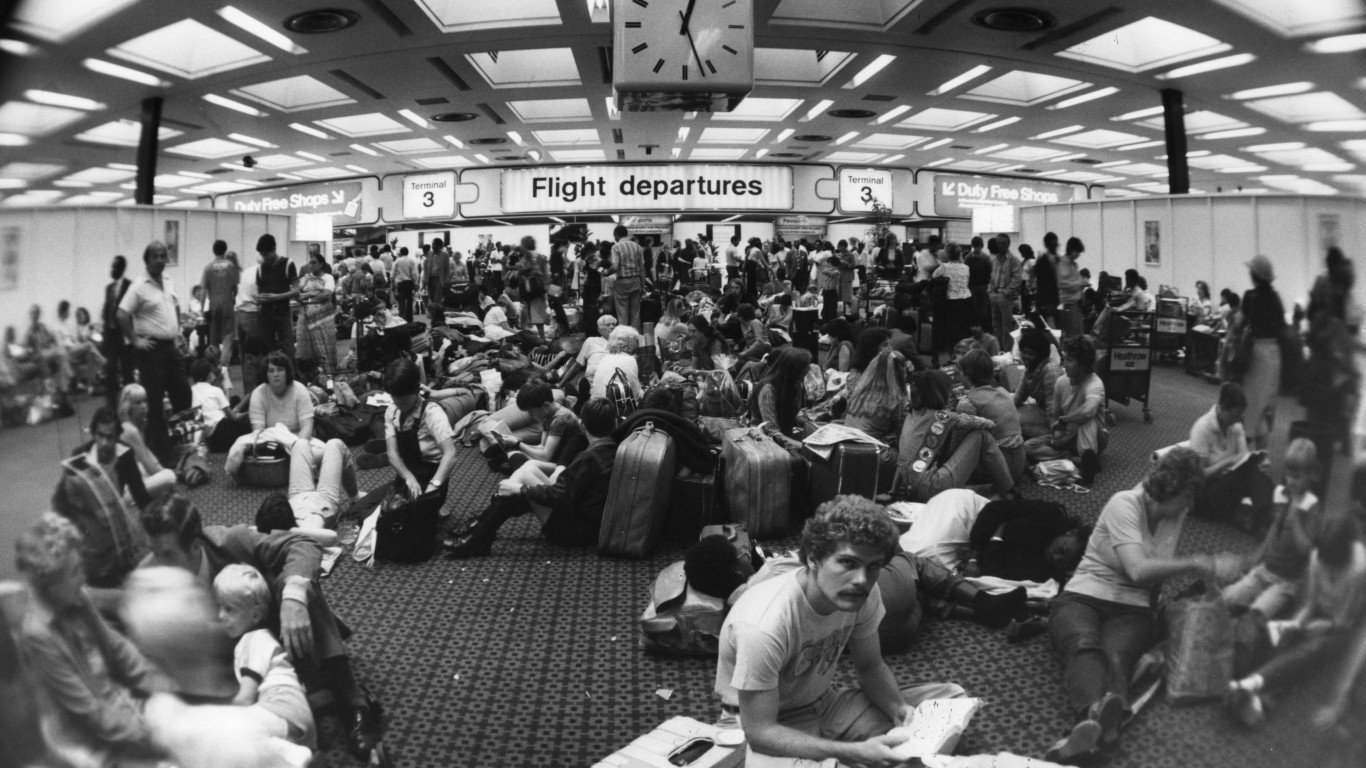
1981
Strikes occurred in all kinds of sectors in 1981, including the brewer Schlitz, the Writers Guild of America, and Milwaukee police. But two job actions dominated the headlines: On Aug. 3, almost 13,000 air-traffic controllers went on strike after negotiations with the federal government to raise their pay and shorten their workweek reached an impasse. It was an early test of newly elected President Ronald Reagan. Two days later, Reagan began firing them, because they were violating his order to return to work. Also in 1981, major league baseball players went on strike beginning on June 12. It was the fifth MLB work stoppage and caused the cancellation of 38% of the season’s game schedule.
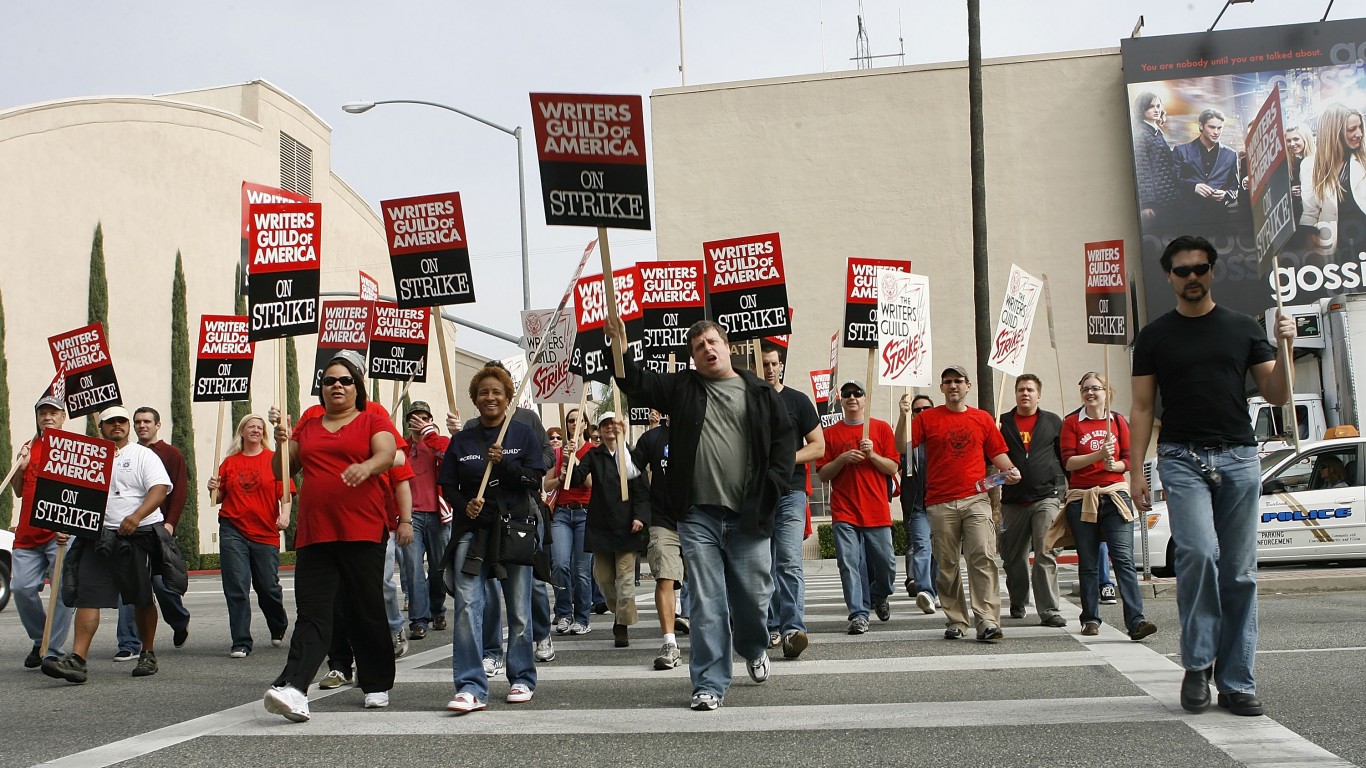
2007 – 08
The 2007-08 period was marked by job actions in the entertainment and media industries. Broadway stagehands, writers at CBS News, and the Writers Guild of America all went on strike. The stagehands’ job action closed 27 shows. The news strikers struck after working without a contract since 2005. The writers’ strike was the third major one in the history of the WGA. Job actions also took place among transit workers in Orange County, California; machinists at Boeing in Seattle; teachers in Hayward, California; and General Motors in Detroit.
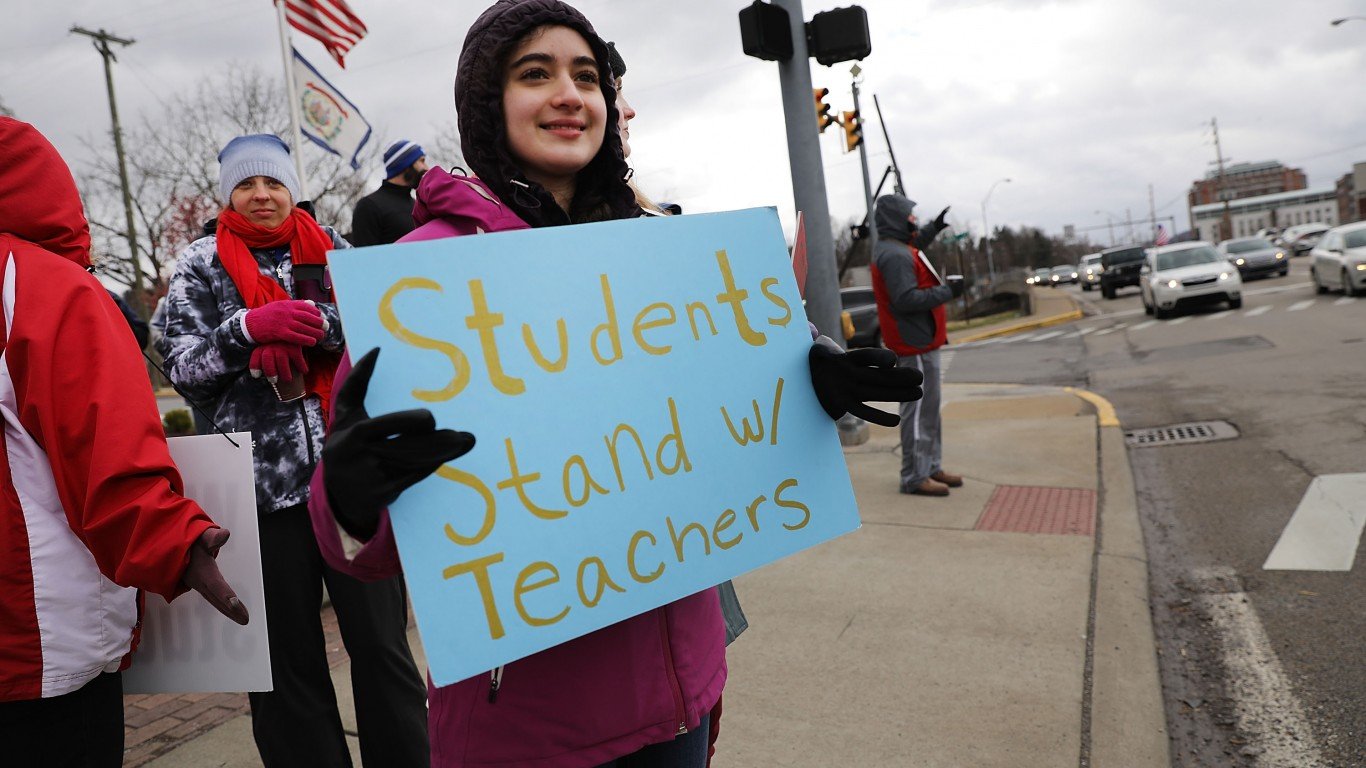
2018
Strikes occurred in various industries across the US in 2018, but the sector with the biggest job actions was education. Beginning in West Virginia in February, teacher job actions spread to Oklahoma and Arizona and eventually to Colorado, California, and Virginia. The issues were higher pay and smaller classroom sizes. Among the more notable non-education job actions were a Coca-Cola strike in Alabama and Mississippi, the Atlanta sanitation strike, and a bus-drivers strike in DeKalb County, Georgia.
[in-text-ad-2]
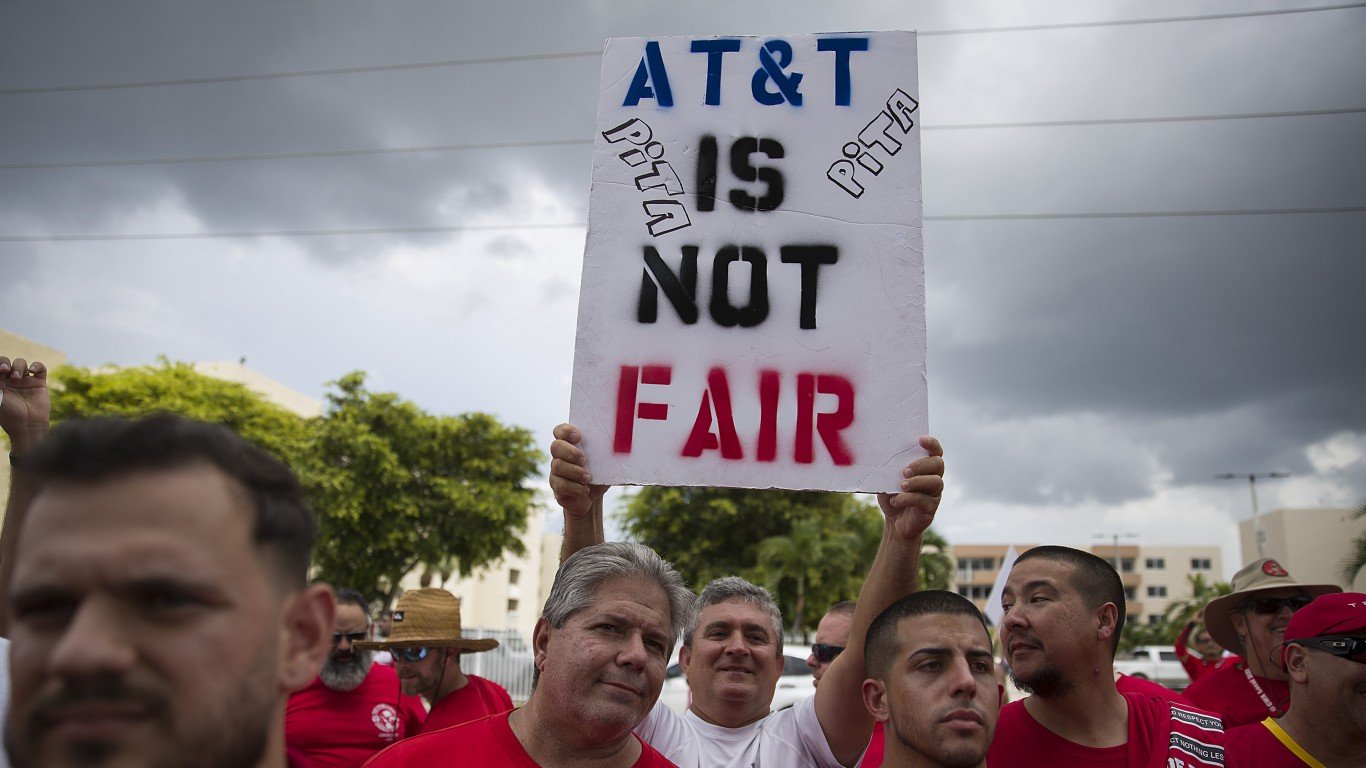
2019
More strikes roiled the classroom in 2019. They occurred in Los Angeles and at Wright State University in Dayton, Ohio. Besides the education sector, strikes happened at AT&T in the South and 240 Stop & Shop stores in New England, and ferry workers struck in Alaska.

2020 – 21
Strikes by graduate students occurred at the University of California, Santa Cruz, and the University of Michigan. Elsewhere, strikes hit a number of different areas. About 4,300 shipbuilders struck the Bath Iron Works in Bath, Maine; workers struck the University of Illinois Hospital; and laborers walked out at an aluminum plant in Alabama in late 2020.
Sponsored: Find a Qualified Financial Advisor
Finding a qualified financial advisor doesn’t have to be hard. SmartAsset’s free tool matches you with up to 3 fiduciary financial advisors in your area in 5 minutes. Each advisor has been vetted by SmartAsset and is held to a fiduciary standard to act in your best interests. If you’re ready to be matched with local advisors that can help you achieve your financial goals, get started now.
Thank you for reading! Have some feedback for us?
Contact the 24/7 Wall St. editorial team.



